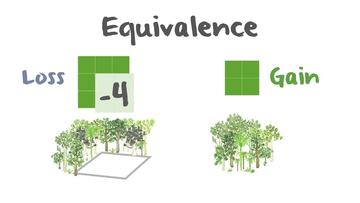Biodiversity compensation faces challenges and presents opportunities in China

Urban development with ecological compensation in Sanya, Hanan Island, China
Image: Shuo Gao
Companies and governments are increasingly compensating for their economic impacts on the natural world. While carbon offsetting is a well-known way to counterbalance carbon-intensive activities like flying, human impacts on biodiversity are also being offset. One of the leading drivers of biodiversity loss is land-use change; agriculture and urbanisation can lead to the clearance of natural habitats. These losses caused by economic development need to be balanced against international and national goals for nature recovery, but this is challenging to achieve.
Nowhere in the world are the potential trade-offs between infrastructure and the environment more stark than in China, both a global biodiversity hotspot and a country undergoing one of the fastest rates of urbanisation in the world. It is estimated that between 2010 and 2013, China poured more concrete than the United States did in the entire 20th century.
Over 100 countries have, or are developing, policies to account for their environmental damages. China is one of these, and has funded numerous projects under its ecological compensation strategy; this includes implementing fees for developers, which are used for habitat creation to make up for the loss of natural habitats caused by their developments.
Researchers at the Department of Biology’s Interdisciplinary Centre for Conservation Science have compiled diverse data to produce the first evaluation of China’s compensation policy and practice. They identified several challenges faced by the compensation policy, as well as some potential opportunities to learn from its successes. Lead author Shuo Gao said:
“Investigating China’s compensation policy and practice can help unravel whether the country’s long-standing approach supports or clashes with their other or more recently set biodiversity goals and commitments.
Major global financial flows and policy efforts are being directed towards compensatory actions and biodiversity restoration; evidence from China can contribute towards developing a general understanding of if and how compensation can be effective.”
Challenges

A presentation of ecological equivalence, meaning both the type and the amount of gains resemble the losses.
First, the researchers found that Forest Vegetation Restoration Fees charged to developers are under-priced in several regions, including the key hubs of Beijing and Shanghai. The fees are the country’s main ecological compensation instrument, including a legal commitment to achieving no net loss of forest cover alongside development activities. The consequence of this is that local government entities with responsibility for forest restoration may not have enough funding to produce the level of restoration needed to fully compensate for the damage caused by developments.
Second, out of 2,844 local governments, fewer than 1% have disclosed how much money they have collected and spent, and what they spent it on.
Third, projects are not required to use quantitative biodiversity metrics, and only 23% of the 31 projects reviewed by the team had utilised them. Additionally, projects do not have to restore habitats which are similar to the ones being lost. This means projects can exchange valuable habitats with less valuable ones; planting roadside trees to make up for lost wetland forest, for example. This means that species and environments can be degraded or lost even if reparations have been made.
Finally, unrestricted flexibility in how projects are reported means that there is inevitably a patchwork of biodiversity indicators across projects, allowing the opportunity for selective reporting.
Taken together, these four issues may undermine conservation by making it near-impossible to compare outcomes and to evaluate the effectiveness of ecological compensation projects.
Opportunities
Some features of China’s policy can inform compensation design in other countries. For example, the government charges upfront fees then reimburses developers if they deliver lower than expected impact on nature. This approach could incentivise developers to avoid or minimise biodiversity impacts early on.
Additionally, the ‘flexible replaceability’ philosophy has created space for nature-based solutions that support human wellbeing, especially in some of China’s most underdeveloped communities. Creative activities have been designed to provide wider environmental benefits to the economy and society, such as camellia growing which generates local employment.
As a next step, the researchers will be exploring further the interaction between human wellbeing and nature in China, looking at the conversion of a wetland area into a major housing development with associated new natural areas for recreation and ecological benefit.
Policy recommendations
The team make several policy recommendations to aid the government to fulfil the State Council's recent biodiversity improvement commitment: They recommend that:
- regional governments re-evaluate the costs required for local forest management and whether current price levels of restoration fees should be increased;
- central government consider legislating for biodiversity impact measurement using a unified indicator framework, and consider making this reporting compulsory for all development activities;
- a public national offset register is established, supported by established indicators, and includes information on restoration fees, prior ecological assessment, and compensation implementation and outcomes.
To read more about this research, published in Conservation Science & Practice, visit: doi.org/10.1111/csp2.13010

